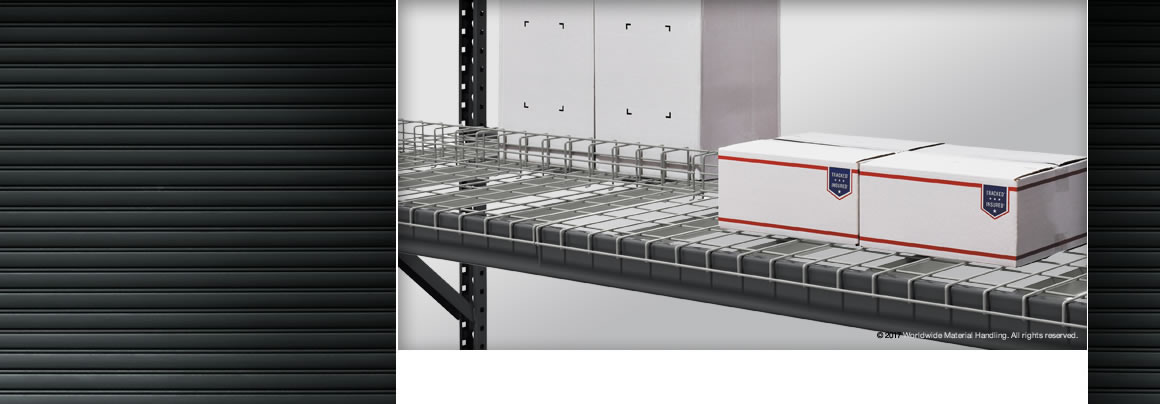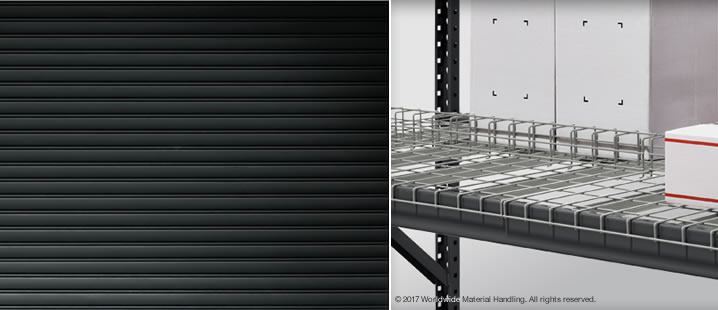BLOG ARCHIVE | Flue Space in Racks: The Key to Efficient and Safe Warehouse Storage
Introduction
In the complex world of warehouse management, every square foot matters. While maximizing storage capacity is often the primary goal, there's a critical element that many warehouse operators overlook: flue space. This seemingly simple concept plays a vital role in fire safety, operational efficiency, and regulatory compliance. Understanding and properly implementing flue space requirements can mean the difference between a safe, efficient warehouse and one that poses serious risks to personnel and inventory.
What is Flue Space?
Flue space means the vertical and horizontal gaps between stored materials in warehouse racking systems. These spaces serve as pathways for heat, smoke, and sprinkler water to travel effectively throughout the storage area during a fire emergency. Think of flue space as the "breathing room" your warehouse needs to maintain proper fire protection coverage.
Longitudinal flue space is the gap that runs parallel to the aisles between rows of stored materials. These spaces typically require a minimum width of 6 inches and should extend from floor to ceiling or the top of storage, whichever is lower.
The National Fire Protection Association (NFPA) 13 standard provides detailed requirements for flue space dimensions, which vary depending on factors such as ceiling height, commodity classification, and sprinkler system design. These requirements are based on extensive fire testing and real-world experience with warehouse fires.
Why Flue Space Matters
Fire Safety and Compliance
The primary purpose of flue space is fire safety. During a warehouse fire, these gaps serve several critical functions:
Sprinkler Water Penetration: Flue spaces allow sprinkler water to reach all levels of stored materials, not just the top surfaces. Without adequate flue space, water may only wet the exterior of stored goods while fires continue to burn within the storage mass.
Heat and Smoke Venting: These spaces provide pathways for hot gases and smoke to rise naturally, preventing heat buildup that could lead to flashover conditions. Proper venting helps maintain visibility for firefighters.
Fire Suppression System Effectiveness: Modern fire suppression systems, including in-rack sprinklers and specialized suppression agents, rely on flue space to distribute effectively throughout the storage area.
From a compliance standpoint, maintaining proper flue space is often mandated by local fire codes, insurance requirements, and OSHA regulations. Failure to comply can result in costly citations, increased insurance premiums, or even facility shutdowns.
Operational Efficiency
Beyond fire safety, properly maintained flue space contributes significantly to warehouse efficiency:
Improved Air Circulation: Adequate spacing allows for better airflow throughout the facility, which can help maintain optimal temperature and humidity levels. This is particularly important for temperature-sensitive goods and can reduce HVAC costs.
Equipment Maneuverability: Well-planned flue space considers the turning radius and clearance requirements of forklifts and other material handling equipment, reducing the risk of accidents and damage to both products and racking systems.
Inventory Visibility: Proper spacing makes it easier for warehouse personnel to visually inspect inventory levels and identify products, reducing picking errors and improving overall accuracy.
Warehouse Layout Optimization
Strategic flue space planning can actually enhance storage capacity when done correctly:
Reduced Product Damage: Ample spacing prevents products from being compressed or damaged by adjacent items.
Flexible Storage Options: Properly designed flue space accommodates various product sizes and shapes, making your warehouse more adaptable to changing inventory needs.
Simplified Maintenance: Access for rack inspection, cleaning, and maintenance becomes much easier with appropriate spacing, extending the life of your storage systems.
Enhancing Storage and Retrieval Efficiency With WorldStop®
Depend on the WorldStop® by Worldwide Material Handling to regulate pallet placement and keep flue spaces in racks open. WorldStop is an essential tool for warehouse operations. These flue space dividers serve many purposes:
Consistent Spacing: WorldStop ensures that the required gaps are maintained consistently throughout the racking system, regardless of the size or shape of stored products. This prevents workers from inadvertently blocking flue space during busy loading periods.
Product Containment: WorldStop dividers prevent smaller items from falling into flue spaces, which could create fire hazards or make retrieval difficult. They also prevent products from shifting and compromising the integrity of the flue space.
Durability and Longevity: WorldStop is designed to withstand the demands of busy warehouse environments, including impacts from forklifts and the weight of heavy products.
Easy Installation and Adjustment: WorldStop is designed for quick installation and easy adjustment as storage needs change, minimizing downtime and labor costs.
The investment in quality flue space dividers pays dividends through improved safety, compliance, and operational efficiency. Many warehouse operators find that proper flue space management actually increases their effective storage capacity by allowing them to store products more densely while maintaining safety requirements.
Conclusion
Flue space is far more than just empty space in your warehouse – it's a critical safety feature that protects your facility, inventory, and most importantly, your personnel. By understanding flue space requirements and implementing proper solutions like our WorldStop flue space dividers, warehouse operators can create safer, more efficient, and fully compliant storage environments.
The key to flue space management lies in partnering with Worldwide Material Handling's experts, who understand the requirements and challenges of warehouse operations. Whether you're designing a new facility or upgrading an existing one, investing in proper flue space solutions is an investment in long-term safety.
Don't let inadequate flue space put your warehouse at risk. Take the time to evaluate your current setup and ensure you're meeting all applicable standards while maximizing your operational efficiency.
Frequently Asked Questions (FAQ)
- What are the minimum flue space requirements for my warehouse?
- Flue space requirements vary based on several factors including ceiling height, commodity classification, sprinkler system type, and local fire codes. Generally, longitudinal flue spaces require a minimum of 6 inches, but specific requirements should always be verified with current NFPA 13 standards and local authorities.
- Can I store products in flue spaces during busy periods?
- No, flue spaces must remain clear at all times. Blocking flue spaces, even temporarily, creates serious fire safety risks and violates fire codes. This is where flue space dividers become valuable – they prevent products from encroaching into clearances.
- Do flue space requirements apply to all types of stored materials?
- Yes, but requirements may vary. High-hazard materials like plastics or aerosols may require larger flue spaces, while more stable commodities might have different requirements. Always consult current standards for your specific products.
- How do flue space dividers affect my storage capacity?
- When properly designed, flue space dividers can actually help optimize storage capacity by allowing you to store products more densely while maintaining required clearances. They prevent over-packing and ensure consistent spacing throughout.
- What happens if my warehouse doesn't meet flue space requirements?
- Non-compliance can result in fire code violations, increased insurance premiums, facility closures, and most seriously, inadequate fire protection that puts lives and property at risk. Regular inspections of flue spaces is essential.
- How often should I inspect my flue spaces?
- Flue spaces should be inspected regularly as part of routine warehouse maintenance. Many facilities incorporate flue space checks into daily operations, while formal inspections should occur at least monthly or as required by your insurance carrier or local fire marshal.

